A CHRONOLOGY OF BANNERSTONES
David Lutz, 619 St. Catherine, Newburgh, Indiana
Charlie Wagers wrote me in April and explained that he was preparing a special Banner-stone issue and asked if I would like to contribute an article. He had learned that I was gathering information on Bannerstone chronology and wanted a paper on Indiana banners. This study was initially going to be limited to banners found in Southern Indiana since most types can be found in the area. However it has gradually been necessary to broaden the area of research to find answers to my questions. My lofty goal was to discover a chronological order to bannerstones as they evolved through their approximately 5000-year existence and to assign a realistic ballpark date for each type.
However, the difficulty of this assignment and the need for more middle archaic sites to be examined, besides having to make a living, have made this goal somewhat unrealistic. However, there have been some successes and I am confident that in the near future most types of banners can be placed in an acceptable order that may more closely represent their chronological position than what is presently known.
Since research has not progressed to the point where I can confidently state this objective, I would just like to share with you some of the problems I have encountered on this project, a few comments on past research, and discuss bannerstones in general.
First I needed to build a good reference library. I had copies of most of the amateur journals which are really a great source of information, and which I think most professionals overlook. I next wanted to obtain a report on every site where a banner or piece of banner had been found. Many of the more recent reports can be purchased reasonably but many of the older reports are too expensive to buy and can only be found at universities with anthropology departments. That was a problem because the closest library was at Indiana University which was over one hundred miles from home. This was solved by a program called the inter-library loan system in which one can go to his local library and order books paying only a small postage fee. This research has not been directed toward the functional use of these stones, but to better understand their unique nature and the complexities of bannerstone evolution. However,one should have an understanding of their purpose. Therefore, my interpretation is offered in the following paragraphs - right or wrong!
For years researchers have been giving us their opinions on the function of bannerstones and it has indeed been exciting reading. Countless hours have been spent in atlatl experimentation and we have been exposed to everything from sliding weights to flexible atlatl's to explain their function but the researchers that have carefully examined the evidence have recognized these stones to be something more than just a weight placed on a stick for the purpose of hunting or defending oneself. I suggest that these stones, from their inception, were highly valued and made for the purpose of status and ceremonialism with the possibility that certain types may have represented families or clans. They may not have always served as ceremonial atlatl equipment nor may they have always been placed in a burial, but nevertheless they were manufactured with care and craftmanship and maintained a revered societal position.
James Tuck (1978:67-68) has suggested that this burial ceremonialism began to occur as early as 550 B.C. Due to an elaborate grave he found at the L'Anse Amour Site in Southern Labrador in eastern Canada. There were many artifacts with the burial but one that especially caught my eye was an ivory piece identified by Tuck as a hand-held harpoon line toggle but looking very much like a curved pick banner. I do not suggest that banners had their origins in these toggles, but mention it only as a matter of record. This early burial ceremonialism was also observed at the Lawrence Site in Trigg County, Kentucky where well-made Kirk-like flint pieces were found in a middle archaic burial that was dated at 5375 B.C. (Mocas 1985).
The first Bannerstones seem to appear in the early Middle Archaic during the Stanley Period which most writers place between 6000 and 5000 B.C. It is unclear if these first specimens are crescent-shaped (v-shaped) as found at the Doerschuk Site in North Carolina, the Neville Site in New Hampshire and the Modoc Rock Shelter in Illinois or boat-shaped (straight across the top surface) as found at the Eva and Ice House Bottom Site in Tennessee or pick-shaped as found with Hidden Valley stemmed points at Site 23S0138 in Missouri (Chapman 1975:152). All of these early examples appear to be well made which discounts Byron Knoblock's (1939:121125) theory that all banners evolved from a perforated pebble form.
The shuttle and tube bannerstones appear next with all their complexities and regional variations. The tube type is a perfect example of the difficulty of this study. It is found over a large area in many stylistic variations from the East Coast to the Midwest and seems to originate in the Morrow Mountain Phase such as found the the Mulberry Creek Site in Alabama (Webb 1942:245). At a depth of nearly fourteen feet, Burial Number 86 had a stone cylinder near the left elbow which Walthall (1980:64) states is a Morrow Mountain Burial. The literature doesn't explain, but I am curious if this early tube type had a flat side. It was also found at the Eva Site in Tennessee in what may be the earliest example of two banners in a single burial. It was also found at the Godar and Bullseye Sites in Illinois during the Helton Phase. The fluted tube and ball banner-stones are a part of this same tradition that eventually culminates in the humped type of the late Archaic.
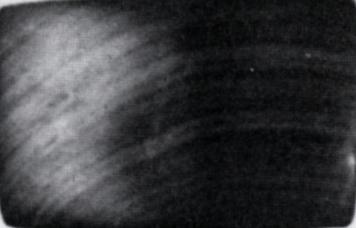
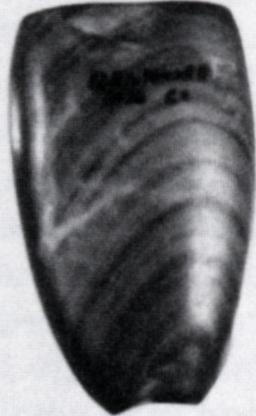
The end of the Middle Archaic is marked by a proliferations of banner styles. It is very confusing period with many different styles. Much work needs to be done in this area to discover the stratigraphic relationship between these different types. Many of these types were no doubt contemporaneous and new styles were being developed by broken specimens being modified. We are fortunate that so many investigations of this period have been undertaken by the state of Illinois. I don't know if the quest for knowledge of this period (approx. 3600 to 2800 B.C.) has been deliberate but I am extremely grateful. Here we get our first good look at new developing styles at such sites as Bullseye, Black Earth, Godar and Ferry. Strangely, not a fragment of a banner was found at the Koster Site which was occupied during the heart of the Banner-Making Era (Helton Phase 37702930 B.C.). During this period we are witness to the first use of sel-ected mortuary sites located away from their habitation area such as found at Bullseye and possibly Godar and Ferry. This burial tradition of high status individuals being buried in non-habitation sites has also been noticed at late archaic sites in Indiana. It will be interesting to learn more of this burial trait which seems to be very inconsistent among these groups.
Sites such as Bullseye with six different banner types and Ferry with seven types are important because of this clustering of banner types which I think may be significant. These mortuary sites were probably of short duration (several hundred years) and were used by the same group repeatedly. They suggest a sequence of types that are morphologically (form and structure) similar and temporally (place in time) close. The Ferry Site located on the Saline River in Southern Illinois has been my personal nemesis. This cluster of seven different banner types probably represents a relative short term mortuary site. A radiocarbon date of 8151 B.P. was obtained but this was obviously from earlier elements found at the site.
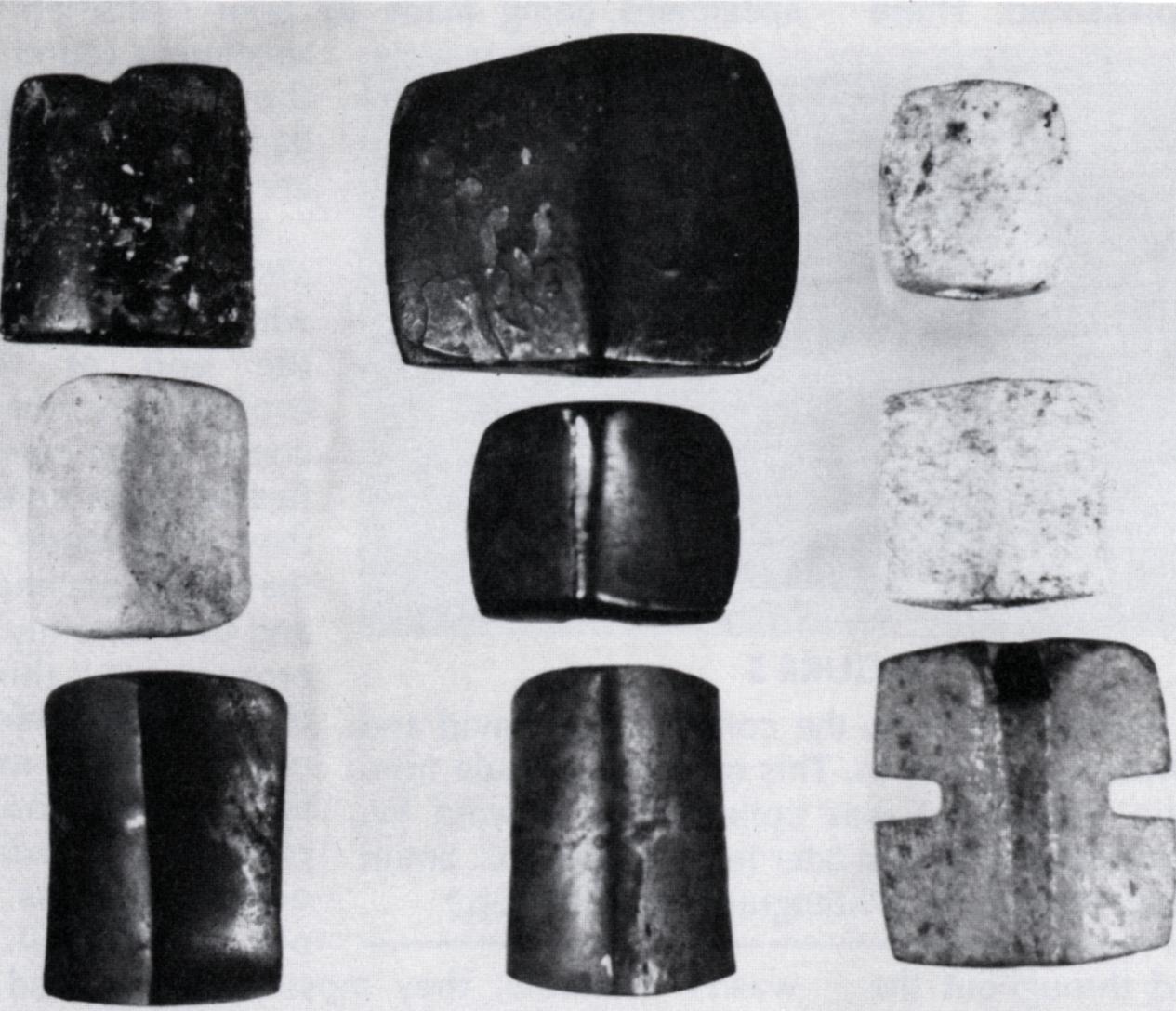
Represented are mostly Cypress Creek and Kirk varieties of the early archaic, but the dominant type is a very non-descript expanding stem projectile (Fowler 1957: Figure 5: H&J) whose 46 examples represent 45% of the total projectiles found and may give us a clue to the temporal placement of the banners. These points look very similar to examples found at the Morrisroe site which is on the Ohio River in Livingston County, Kentucky (Nance 1986:41 Figure 14). These expanding stem types were found in Stratum 2 at Morrisroe which Nance states (1986:25), immediately predated and is partially coeval with the earlier occupation of the Black Earth Site (Zones 3C and 3D). The predominant point type found at the Black Earth, Godar, and Bullseye Sites are a side-notch type (Big Sandy), but it is a minor type at Ferry with only three specimens found.
Our understanding of banner types of the late Archaic Period is much better than the previous period due to the larger number of sites excavated in Northern Alabama, Tennessee and Kentucky. My interest in this project began with an incredible find made by my father on a river bank near the town of Rockport in Spencer County, Indiana. A burial had been exposed due to the falling Ohio River that contained two hook bannerstones and one hourglass bi-face bottle type. They had all been ceremonially "killed".
From the years we have collected from the site, five other banners have been found on the beach. Represented are two humped types, two other bi-face has practically gone unnoticed by researchers should alert us to the role bannerstones played in this burial ceremonialism and that these different types are of the same temporal placement. There are also reports of three different types found in a burial such as the cremation burial (Dowd 1989:102) found at the Anderson Site in Tennessee which contained two different types of oval banners and a segmented shell type. I also know of a burial found in Harrison County, Indiana that contained a horn banner, a single- face bottle type and a triangular type which were found together only inches apart. A cremation burial at Crib Mound in Spencer County, Indiana contained three quartz butterfly types and three granite hinge type banners.
In the past, sites located along the Green River in Kentucky have been described as a single cultural unit with the artifacts lumped together and described as the Green River Phase. However, it has been recognized for some time that several different components are represented. These middens as the ones in Indiana and elsewhere date at different periods of the bannerstone making area and the components vary from site to site. These mid-dens are also difficult to analyze because the soil has the same color and texture and there seems to be no stratigraphic relationship between the artifacts. Hopefully in the future these different components of the late archaic can be identified and separated from this conglomeration of traits found throughout the journals.
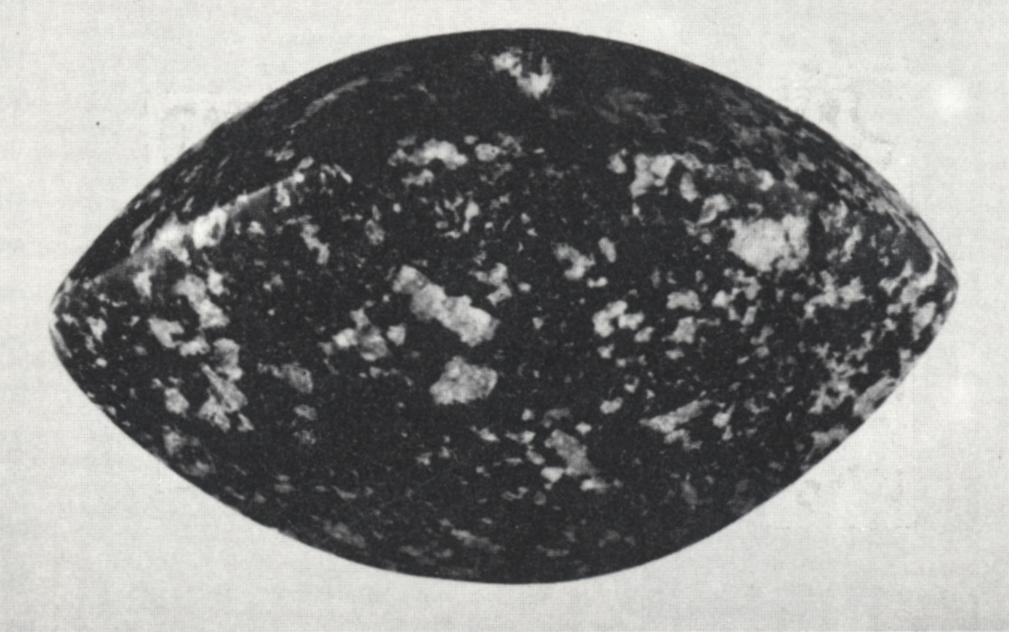
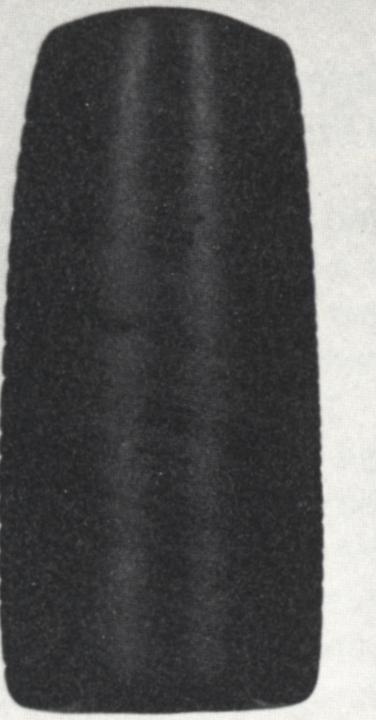
The first is his use of primary forms which are represented by right basic forms that he states evolved into thirty-two ultimate designs or types. I suggest these primary forms are nothing more than blending forms in the evolutionary chart and their crude appearance may be due to specimens being made by poor craftsmen or specimens found at the fringe of the bannerstone making area. He also states that ultimate decisions which he placed at the end of the evolutionary chart, could not be classified as types unless they were made of the proper materials and this certainly is erroneous. I think they had a preference for certain materials and would probably go to extraordinary lengths to obtain it, but if it wasn't available, they most certainly used a substitute. For example, I have found three broken geniculate pieces in Spencer County, Indiana and none were made of banded slate, the preferred material.
The last issue is whether an adjustment is needed in the typology to include new types. I am aware of several that should be included in the chronological chart as new types but what should be done about those specimens of different construction and different temporal periods that are identified by the same name. One example of this is the use of the type name hourglass to describe the single-face hourglass type such contradiction but unaware of the temporal difference when he stated (Knoblock 1939:129) "because these objects are nothing more than hourglass variations, there is no reason why they should be put into an independent group". These same arguments can also be found among other types. The only work done on bannerstone chronology in a scientific manner was by Mary Kwas (1981). She has used the date from excavated sites where banners where found to loosely arrange their order of appearance. It is a very good report considering the data she was working with. I am having the same problems as she with poor descriptions and photos. She has limited her report to types found only in the Southeast and the temporal placement for these types is weak because researchers from which her material was gathered used broad temporal periods to describe units of culture that were obviously much smaller.

In concluding this paper I would like to impress upon the readers the enjoyment and satisfaction of this bannerstone study. It has been very gratifying to make these small discoveries and slowly observe this chronological order unfolding.
I would also like to comment on the danger of misinterpreting the data. As one works with these specimens in trying to establish their chronological sequence, one has to be very cautious in his interpretations because the temptation is great to arrange them in an order that may seem very obvious with perceived evolutionary lines and planes but arranging these specimens without the advantage of stratigraphy could give erroneous results. This is a very complex problem and it will undoubtably require the excavation of new archaeological sites for more data. This may be a problem because it now appears that some universities are beginning to pull back from their field explorations due to pressure from certain Indian groups. The ideas expressed in this paper are mine alone and I take full responsibility for their content.
Duplicated from the “Resources” section of arrowheads.com and reproduced with permission.
David Lutz, 619 St. Catherine, Newburgh, Indiana
Charlie Wagers wrote me in April and explained that he was preparing a special Banner-stone issue and asked if I would like to contribute an article. He had learned that I was gathering information on Bannerstone chronology and wanted a paper on Indiana banners. This study was initially going to be limited to banners found in Southern Indiana since most types can be found in the area. However it has gradually been necessary to broaden the area of research to find answers to my questions. My lofty goal was to discover a chronological order to bannerstones as they evolved through their approximately 5000-year existence and to assign a realistic ballpark date for each type.
However, the difficulty of this assignment and the need for more middle archaic sites to be examined, besides having to make a living, have made this goal somewhat unrealistic. However, there have been some successes and I am confident that in the near future most types of banners can be placed in an acceptable order that may more closely represent their chronological position than what is presently known.
Since research has not progressed to the point where I can confidently state this objective, I would just like to share with you some of the problems I have encountered on this project, a few comments on past research, and discuss bannerstones in general.
First I needed to build a good reference library. I had copies of most of the amateur journals which are really a great source of information, and which I think most professionals overlook. I next wanted to obtain a report on every site where a banner or piece of banner had been found. Many of the more recent reports can be purchased reasonably but many of the older reports are too expensive to buy and can only be found at universities with anthropology departments. That was a problem because the closest library was at Indiana University which was over one hundred miles from home. This was solved by a program called the inter-library loan system in which one can go to his local library and order books paying only a small postage fee. This research has not been directed toward the functional use of these stones, but to better understand their unique nature and the complexities of bannerstone evolution. However,one should have an understanding of their purpose. Therefore, my interpretation is offered in the following paragraphs - right or wrong!
For years researchers have been giving us their opinions on the function of bannerstones and it has indeed been exciting reading. Countless hours have been spent in atlatl experimentation and we have been exposed to everything from sliding weights to flexible atlatl's to explain their function but the researchers that have carefully examined the evidence have recognized these stones to be something more than just a weight placed on a stick for the purpose of hunting or defending oneself. I suggest that these stones, from their inception, were highly valued and made for the purpose of status and ceremonialism with the possibility that certain types may have represented families or clans. They may not have always served as ceremonial atlatl equipment nor may they have always been placed in a burial, but nevertheless they were manufactured with care and craftmanship and maintained a revered societal position.
James Tuck (1978:67-68) has suggested that this burial ceremonialism began to occur as early as 550 B.C. Due to an elaborate grave he found at the L'Anse Amour Site in Southern Labrador in eastern Canada. There were many artifacts with the burial but one that especially caught my eye was an ivory piece identified by Tuck as a hand-held harpoon line toggle but looking very much like a curved pick banner. I do not suggest that banners had their origins in these toggles, but mention it only as a matter of record. This early burial ceremonialism was also observed at the Lawrence Site in Trigg County, Kentucky where well-made Kirk-like flint pieces were found in a middle archaic burial that was dated at 5375 B.C. (Mocas 1985).
The first Bannerstones seem to appear in the early Middle Archaic during the Stanley Period which most writers place between 6000 and 5000 B.C. It is unclear if these first specimens are crescent-shaped (v-shaped) as found at the Doerschuk Site in North Carolina, the Neville Site in New Hampshire and the Modoc Rock Shelter in Illinois or boat-shaped (straight across the top surface) as found at the Eva and Ice House Bottom Site in Tennessee or pick-shaped as found with Hidden Valley stemmed points at Site 23S0138 in Missouri (Chapman 1975:152). All of these early examples appear to be well made which discounts Byron Knoblock's (1939:121125) theory that all banners evolved from a perforated pebble form.
The shuttle and tube bannerstones appear next with all their complexities and regional variations. The tube type is a perfect example of the difficulty of this study. It is found over a large area in many stylistic variations from the East Coast to the Midwest and seems to originate in the Morrow Mountain Phase such as found the the Mulberry Creek Site in Alabama (Webb 1942:245). At a depth of nearly fourteen feet, Burial Number 86 had a stone cylinder near the left elbow which Walthall (1980:64) states is a Morrow Mountain Burial. The literature doesn't explain, but I am curious if this early tube type had a flat side. It was also found at the Eva Site in Tennessee in what may be the earliest example of two banners in a single burial. It was also found at the Godar and Bullseye Sites in Illinois during the Helton Phase. The fluted tube and ball banner-stones are a part of this same tradition that eventually culminates in the humped type of the late Archaic.


The end of the Middle Archaic is marked by a proliferations of banner styles. It is very confusing period with many different styles. Much work needs to be done in this area to discover the stratigraphic relationship between these different types. Many of these types were no doubt contemporaneous and new styles were being developed by broken specimens being modified. We are fortunate that so many investigations of this period have been undertaken by the state of Illinois. I don't know if the quest for knowledge of this period (approx. 3600 to 2800 B.C.) has been deliberate but I am extremely grateful. Here we get our first good look at new developing styles at such sites as Bullseye, Black Earth, Godar and Ferry. Strangely, not a fragment of a banner was found at the Koster Site which was occupied during the heart of the Banner-Making Era (Helton Phase 37702930 B.C.). During this period we are witness to the first use of sel-ected mortuary sites located away from their habitation area such as found at Bullseye and possibly Godar and Ferry. This burial tradition of high status individuals being buried in non-habitation sites has also been noticed at late archaic sites in Indiana. It will be interesting to learn more of this burial trait which seems to be very inconsistent among these groups.
Sites such as Bullseye with six different banner types and Ferry with seven types are important because of this clustering of banner types which I think may be significant. These mortuary sites were probably of short duration (several hundred years) and were used by the same group repeatedly. They suggest a sequence of types that are morphologically (form and structure) similar and temporally (place in time) close. The Ferry Site located on the Saline River in Southern Illinois has been my personal nemesis. This cluster of seven different banner types probably represents a relative short term mortuary site. A radiocarbon date of 8151 B.P. was obtained but this was obviously from earlier elements found at the site.

Represented are mostly Cypress Creek and Kirk varieties of the early archaic, but the dominant type is a very non-descript expanding stem projectile (Fowler 1957: Figure 5: H&J) whose 46 examples represent 45% of the total projectiles found and may give us a clue to the temporal placement of the banners. These points look very similar to examples found at the Morrisroe site which is on the Ohio River in Livingston County, Kentucky (Nance 1986:41 Figure 14). These expanding stem types were found in Stratum 2 at Morrisroe which Nance states (1986:25), immediately predated and is partially coeval with the earlier occupation of the Black Earth Site (Zones 3C and 3D). The predominant point type found at the Black Earth, Godar, and Bullseye Sites are a side-notch type (Big Sandy), but it is a minor type at Ferry with only three specimens found.
Our understanding of banner types of the late Archaic Period is much better than the previous period due to the larger number of sites excavated in Northern Alabama, Tennessee and Kentucky. My interest in this project began with an incredible find made by my father on a river bank near the town of Rockport in Spencer County, Indiana. A burial had been exposed due to the falling Ohio River that contained two hook bannerstones and one hourglass bi-face bottle type. They had all been ceremonially "killed".
From the years we have collected from the site, five other banners have been found on the beach. Represented are two humped types, two other bi-face has practically gone unnoticed by researchers should alert us to the role bannerstones played in this burial ceremonialism and that these different types are of the same temporal placement. There are also reports of three different types found in a burial such as the cremation burial (Dowd 1989:102) found at the Anderson Site in Tennessee which contained two different types of oval banners and a segmented shell type. I also know of a burial found in Harrison County, Indiana that contained a horn banner, a single- face bottle type and a triangular type which were found together only inches apart. A cremation burial at Crib Mound in Spencer County, Indiana contained three quartz butterfly types and three granite hinge type banners.
In the past, sites located along the Green River in Kentucky have been described as a single cultural unit with the artifacts lumped together and described as the Green River Phase. However, it has been recognized for some time that several different components are represented. These middens as the ones in Indiana and elsewhere date at different periods of the bannerstone making area and the components vary from site to site. These mid-dens are also difficult to analyze because the soil has the same color and texture and there seems to be no stratigraphic relationship between the artifacts. Hopefully in the future these different components of the late archaic can be identified and separated from this conglomeration of traits found throughout the journals.


The first is his use of primary forms which are represented by right basic forms that he states evolved into thirty-two ultimate designs or types. I suggest these primary forms are nothing more than blending forms in the evolutionary chart and their crude appearance may be due to specimens being made by poor craftsmen or specimens found at the fringe of the bannerstone making area. He also states that ultimate decisions which he placed at the end of the evolutionary chart, could not be classified as types unless they were made of the proper materials and this certainly is erroneous. I think they had a preference for certain materials and would probably go to extraordinary lengths to obtain it, but if it wasn't available, they most certainly used a substitute. For example, I have found three broken geniculate pieces in Spencer County, Indiana and none were made of banded slate, the preferred material.
The last issue is whether an adjustment is needed in the typology to include new types. I am aware of several that should be included in the chronological chart as new types but what should be done about those specimens of different construction and different temporal periods that are identified by the same name. One example of this is the use of the type name hourglass to describe the single-face hourglass type such contradiction but unaware of the temporal difference when he stated (Knoblock 1939:129) "because these objects are nothing more than hourglass variations, there is no reason why they should be put into an independent group". These same arguments can also be found among other types. The only work done on bannerstone chronology in a scientific manner was by Mary Kwas (1981). She has used the date from excavated sites where banners where found to loosely arrange their order of appearance. It is a very good report considering the data she was working with. I am having the same problems as she with poor descriptions and photos. She has limited her report to types found only in the Southeast and the temporal placement for these types is weak because researchers from which her material was gathered used broad temporal periods to describe units of culture that were obviously much smaller.

In concluding this paper I would like to impress upon the readers the enjoyment and satisfaction of this bannerstone study. It has been very gratifying to make these small discoveries and slowly observe this chronological order unfolding.
I would also like to comment on the danger of misinterpreting the data. As one works with these specimens in trying to establish their chronological sequence, one has to be very cautious in his interpretations because the temptation is great to arrange them in an order that may seem very obvious with perceived evolutionary lines and planes but arranging these specimens without the advantage of stratigraphy could give erroneous results. This is a very complex problem and it will undoubtably require the excavation of new archaeological sites for more data. This may be a problem because it now appears that some universities are beginning to pull back from their field explorations due to pressure from certain Indian groups. The ideas expressed in this paper are mine alone and I take full responsibility for their content.
Duplicated from the “Resources” section of arrowheads.com and reproduced with permission.